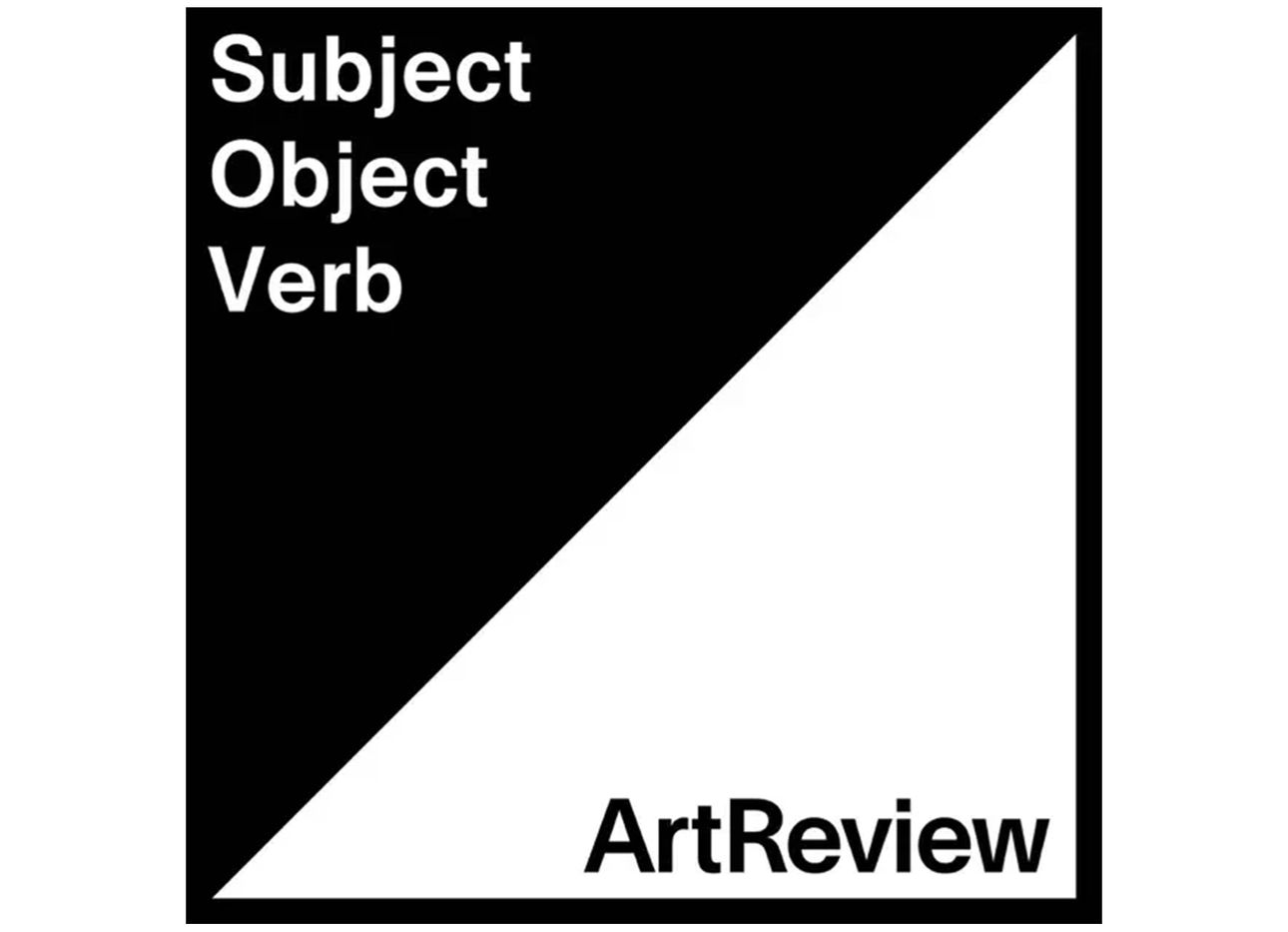
ArtReview’s Podcast Collages Audio Out of Artists’ Life and Work
One episode begins with sputtering phonemes. Another plays back organized cries of dissent from the 2019 Hong Kong protests. In a third, virtuosic jazz guitarist Pat Metheny plays a few bars from a sweet, nylon-string track before the music fades and becomes a soundbed over which Ross Simonini, artist, writer, and host of the podcast, begins an aural investigation into the musician’s lifelong engagement with sound. Episode after episode, Simonini chases a similar depth with a sly and often behind-the-curtain approach, splicing interviews and disparate worlds of sound together to create ArtReview’s formally experimental podcast, Subject, Object, Verb.
A sonic studio visit is one way to describe the show. There’s a studied consideration on each episode of the relationships that form between an artist, art, and life—or in the show’s parlance: the subject, object, and verb. The three-pronged approach means there’s no fluff or canned answers. We learn about writer Sheila Heti’s event-planning insecurities, musician Hunter Hunt-Hendrix’s Transcendental Qabala, and, via author Mason Currey in an episode on routine, why so many monks pass through the same door with the same foot at the same time of day. Artist Jacolby Satterwhite shares dance music he made from his mother’s posthumous singing. Pat Metheny describes an earnest, spiritual engagement with the act of attention.
There is, as with any art, the question of presentation. I once heard an employee at a well-known narrative reporting podcast say that his mandate was to keep listeners oriented at all times. Within a few seconds, he had to tag who was speaking and locate them with acute clarity in the space-time continuum. Ideally this allows a person to switch on the radio in their car or kitchenette and grok what’s happening. Since most podcasts will never play on the radio, it’s worth asking why most have adopted the same formal structure, and what other options there could be.
Simonini not only asks but answers. A self-described generalist whose work encompasses music, painting, and writing, his closest radio relative might be the late-night storyteller Joe Frank. Where Frank slipped in and out of fiction, telling imaginative stories grounded in something real without ever definitively explaining what, Simonini slips from one moment and space to another, collaging a typical continuum into its own totally coherent world. Simonini might describe the impulse best himself, when introducing a track by U.K.-based multidisciplinary artist Klein: “When I heard it, I had no sense of genre, no grounding or context to attach to it. I was disoriented, which is a rare, wonderful feeling in art.”
Klein’s episode is a case study for the show’s potential. The musician digitally manipulates her own interview and makes an artwork out of it, giving us something chopped and screwed, pitch-shifted, and juxtaposed by way of Simonini’s production alongside Nollywood songs that influenced her as a child, jingles for candy, and the chaotic theme to the British comedy sketch show Dick and Dom. The strange portrait of Klein is more than lingual, more than aural: It’s interstitial and artful. As her influences are offered up, the disorientation calms. Strange new fish float to the surface. The ear picks up on sounds that are not only new, but carry a sympathetic resonance. It’s a new sonic world with which it’s hard not to empathize.
Simonini’s search for depth and collage-heavy presentation sets Subject, Object, Verb apart. The sympathetic resonance might be exactly what’s inside each episode: another person, another life, another way to see the world. Here, disparate sounds from an artist’s world mix together to give us a portrait that, one gets the sense, couldn’t exist in any other way.